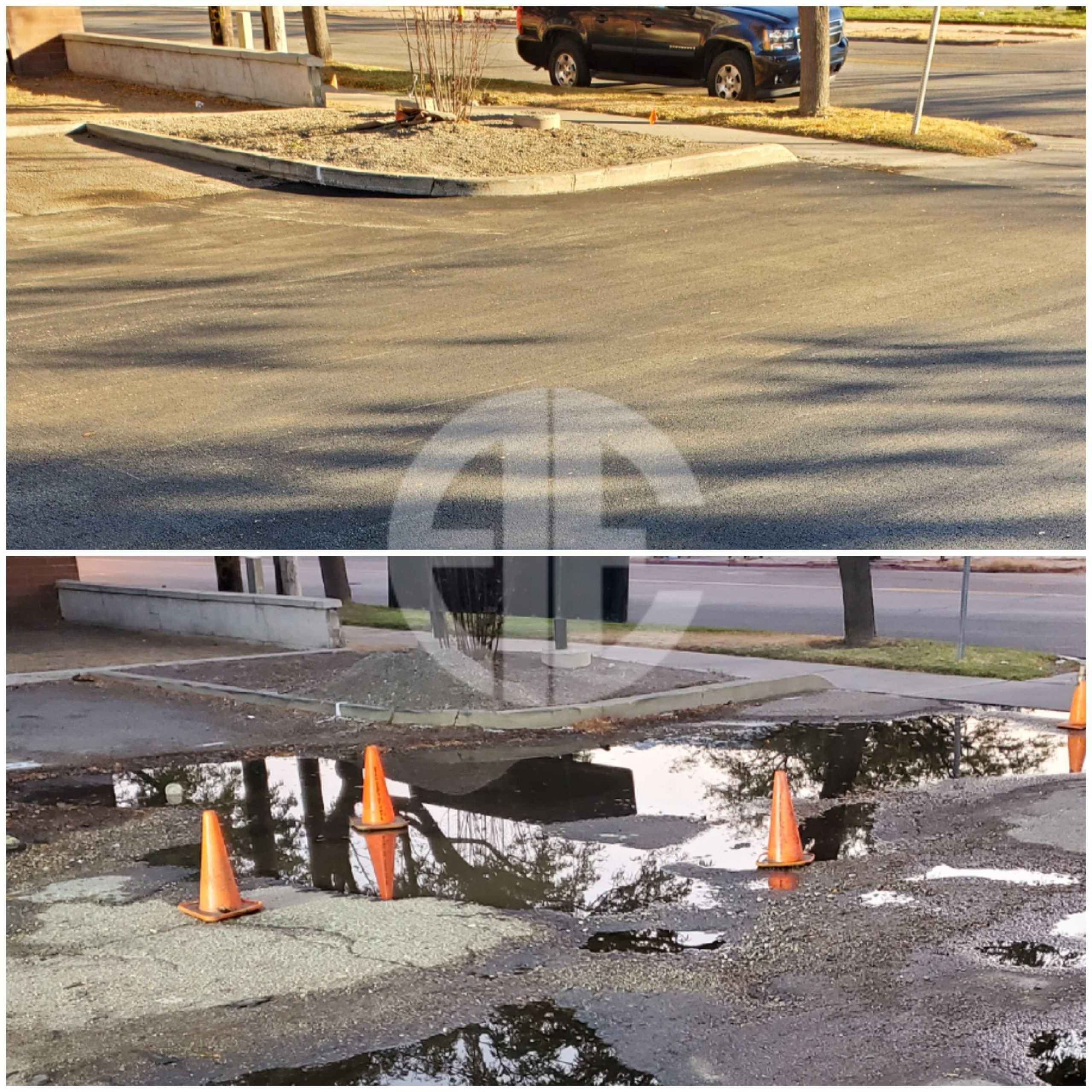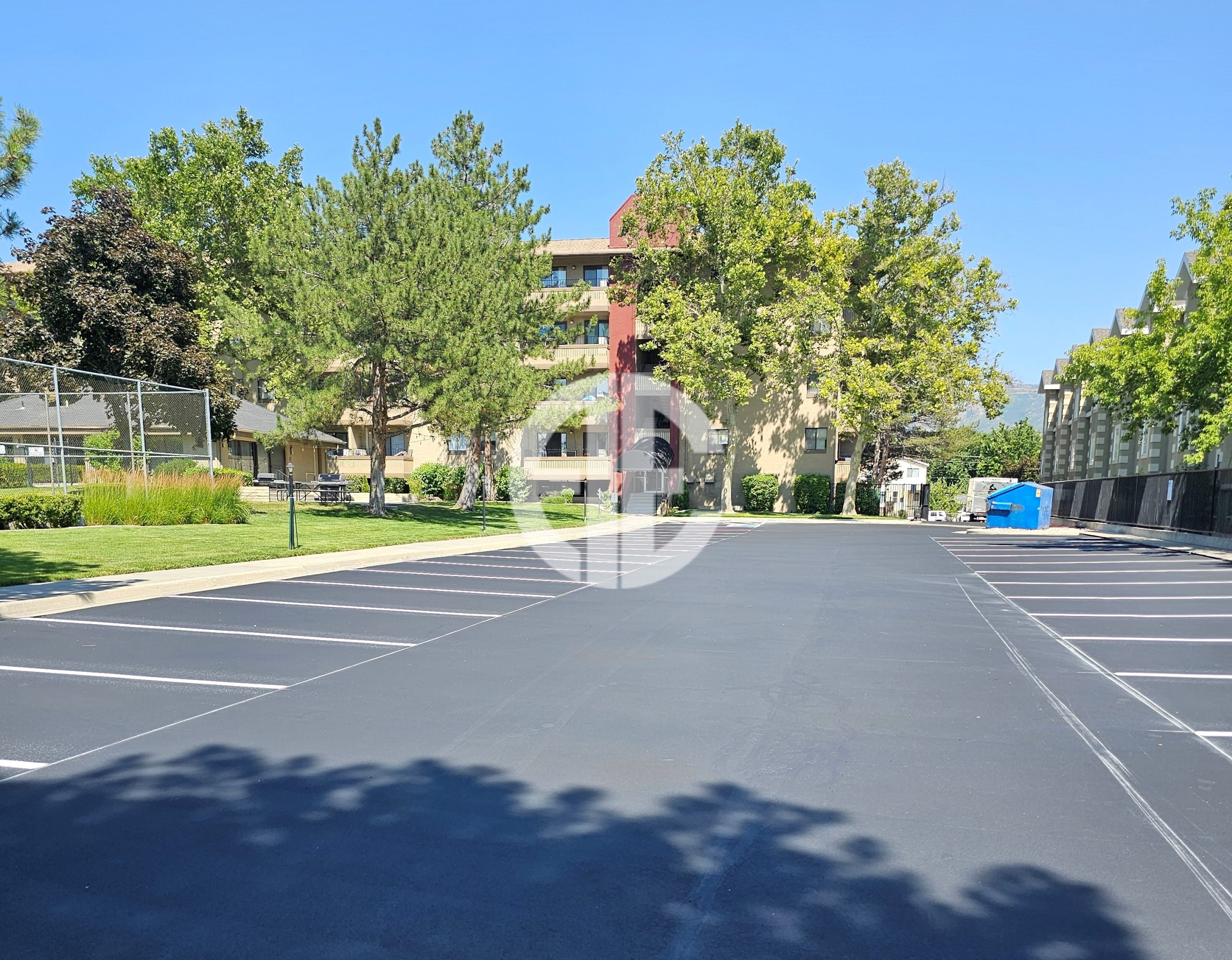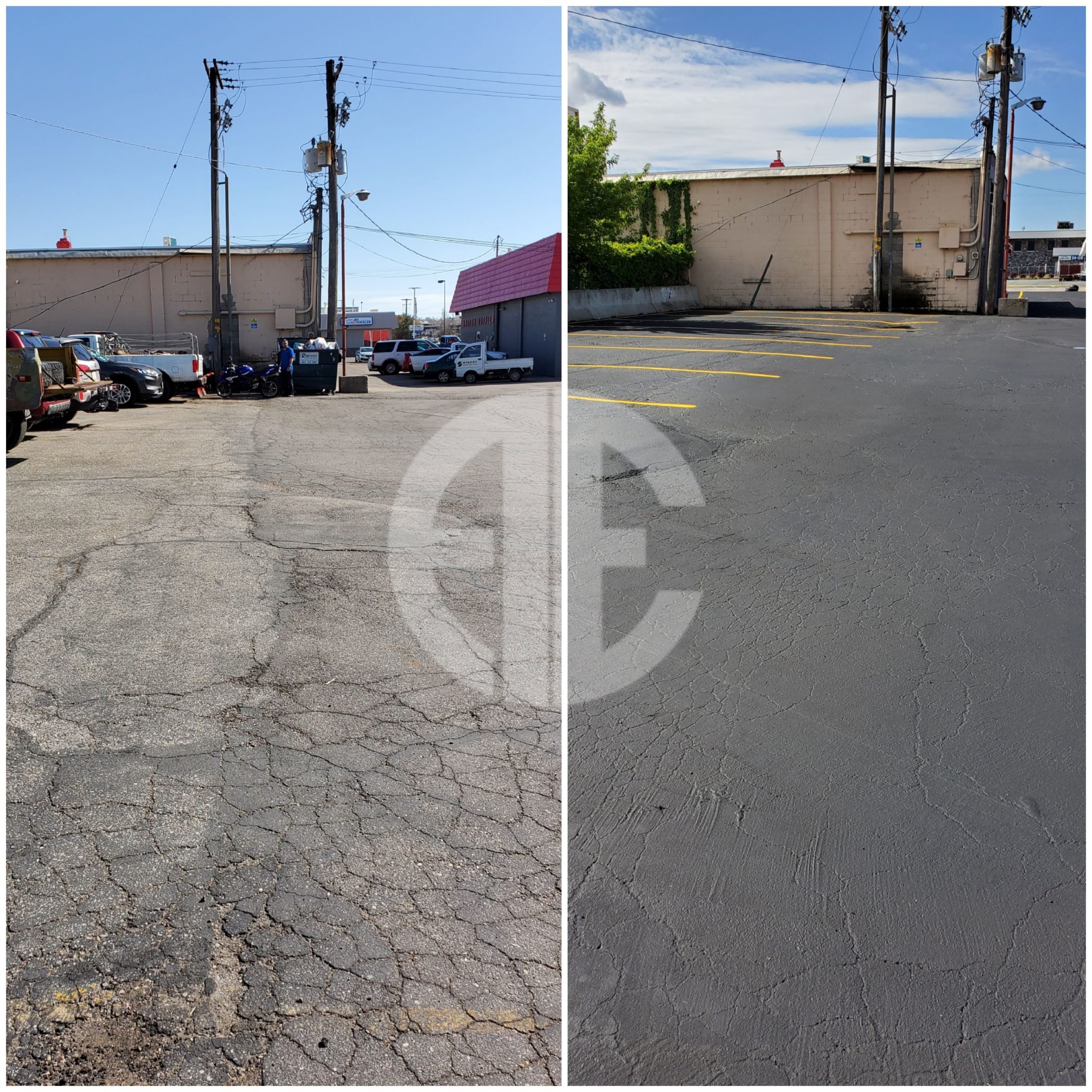Potholes are an all-too-familiar nuisance on roads, affecting drivers, municipalities, and businesses alike. They reduce road quality, damage vehicles, and pose safety hazards. While potholes are inevitable due to natural wear and tear, understanding their causes and implementing effective repair techniques can save time and money while ensuring smoother, safer roads.
At Asphalt Experts, we know that proactive maintenance and timely repairs can significantly reduce pothole-related expenses. In this guide, we’ll break down the primary causes of potholes, key prevention strategies, and the most effective repair methods for lasting road durability.
What Causes Potholes?
Several factors contribute to pothole formation, including:
1. Water Infiltration
One of the biggest culprits behind potholes is water infiltration. When water seeps into small cracks in the pavement, it weakens the asphalt. In colder climates, freeze-thaw cycles further accelerate the damage, expanding cracks and breaking down the road structure.
2. Heavy Traffic Load
Repeated pressure from vehicles—especially heavy trucks—deteriorates already weakened pavement. Over time, small cracks and depressions give way to larger potholes as the asphalt breaks apart.
3. Poor Drainage
Standing water on roads due to inadequate drainage speeds up deterioration. Without proper stormwater systems, excess water weakens the subgrade, leading to premature pothole formation.
4. Weak Subgrade or Base
If the foundation beneath the asphalt isn’t strong enough, the surface becomes unstable. Poor soil conditions or improper road construction can cause the asphalt to settle unevenly, making potholes more likely to form.
5. Aging Asphalt
Asphalt naturally deteriorates over time, becoming brittle and more susceptible to cracks. Without regular maintenance, older roads are more prone to potholes, requiring frequent repairs.
How to Prevent Potholes
Prevention is always better (and cheaper) than repairs. By following these maintenance strategies, road owners can extend the lifespan of their pavement:
1. Routine Maintenance
- Sealcoating and crack filling prevent water from penetrating the asphalt, reducing damage over time.
- Regular inspections allow road managers to address small issues before they escalate.
2. Improved Drainage Systems
- Ensuring proper drainage design, including culverts and ditches, prevents water from pooling on the road surface.
- Regularly cleaning storm drains helps maintain water flow and reduces pavement saturation.
3. High-Quality Asphalt Materials
- Using durable asphalt mixes with well-graded aggregates and high-quality binders enhances pavement strength.
- Proper compaction during construction ensures a solid, long-lasting surface.
4. Early Repairs
- Addressing small cracks and potholes as soon as they appear can prevent expensive long-term damage.
- Seasonal monitoring—especially before and after winter—helps identify weak spots before they worsen.
Best Pothole Repair Techniques
When potholes do form, choosing the right repair method is crucial for durability and cost-effectiveness. Here are the most commonly used techniques:
1. Cold Patch Repair (Temporary Fix)
- Process: Pre-mixed asphalt is shoveled into the pothole and compacted.
- Best for: Quick emergency repairs, especially in winter.
- Limitations: Not as durable as permanent solutions; may require reapplication.
2. Hot Mix Asphalt Repair (Permanent Fix)
- Process: The damaged area is removed, cleaned, and filled with fresh hot mix asphalt before being compacted.
- Best for: Long-term repairs in warmer conditions.
- Limitations: Requires specialized equipment and dry weather.
3. Throw-and-Roll Method
- Process: Patch material is poured into the pothole and compacted using vehicle tires.
- Best for: Fast repairs on busy roads.
- Limitations: Short-term fix with lower durability.
4. Infrared Asphalt Repair
- Process: The damaged asphalt is reheated, new material is added, and the surface is blended seamlessly.
- Best for: High-quality, smooth repairs with minimal material waste.
- Limitations: Requires advanced equipment and higher initial costs.
Challenges in Pothole Repairs & Solutions
Even with the best techniques, certain challenges can impact the effectiveness of repairs:
1. Poor Adhesion Between Layers
- Solution: Clean the surface thoroughly and apply a tack coat before overlaying new asphalt.
2. Reflective Cracking
- Solution: Use geotextile fabrics or reinforcement layers to prevent cracks from reappearing.
3. Drainage Issues
- Solution: Improve surface slopes and maintain stormwater systems for proper drainage.
4. Uneven Surface Levels
- Solution: Milling or leveling before repairs ensures a smooth, uniform finish.
Potholes are an inevitable challenge for road owners, but they don’t have to be a recurring headache. By investing in preventive maintenance, high-quality materials, and timely repairs, municipalities and businesses can reduce long-term costs while improving road safety.
At Asphalt Experts, we specialize in pothole repairs and asphalt maintenance to keep roads smooth and durable. Whether you need emergency fixes or long-term solutions, we have the expertise and equipment to get the job done right.
Need expert pothole repairs? Contact Asphalt Experts today!
Trust Asphalt Experts – Your Partner for Asphalt Care Excellence in Utah









 Clearfield
Clearfield